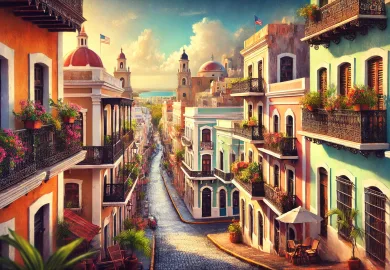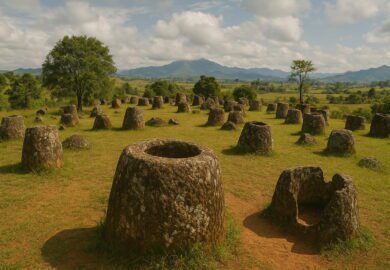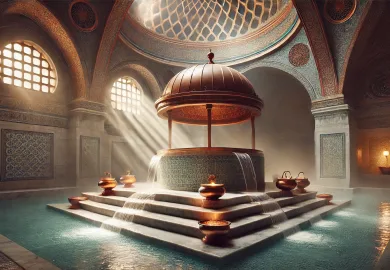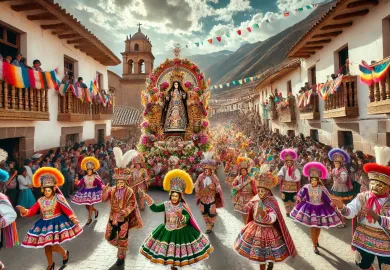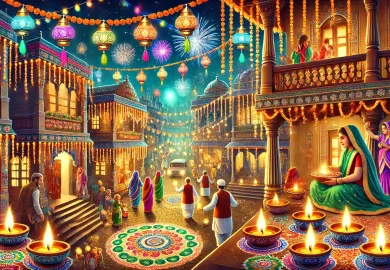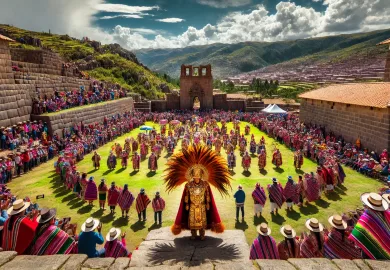
Brazil is a country of vibrant colors, diverse cultures, and breathtaking landscapes. Its cultural heritage is as diverse as its natural beauty, making it a destination full of remarkable sites that offer deep insights into the country’s history and traditions. From colonial towns frozen in time to modernist architectural marvels, Brazil’s cultural landmarks showcase the blend of indigenous, African, and European influences that define this fascinating nation. Whether you’re a history enthusiast, an architecture lover, or someone seeking authentic cultural experiences, Brazil offers an array of stunning cultural sights that are sure to captivate your imagination. In this article, we will explore some of the most beautiful cultural sights in Brazil, each with its unique charm and significance.
The Colonial Charm of Ouro Preto
Ouro Preto, located in the state of Minas Gerais, is one of Brazil’s most well-preserved colonial towns and a UNESCO World Heritage Site. Founded in the late 17th century, Ouro Preto played a pivotal role during Brazil’s gold rush, and today, it stands as a living museum of baroque architecture and colonial history.
Walking through the cobblestone streets of Ouro Preto is like stepping back in time. The town is home to some of the most beautiful colonial churches in Brazil, including the Church of Saint Francis of Assisi, designed by the renowned artist Aleijadinho. This masterpiece is celebrated for its intricate woodwork, gold-leaf details, and breathtaking frescoes. Ouro Preto’s steep streets are also lined with colorful colonial buildings, artisan shops, and museums that tell the story of Brazil’s colonial past.
The cultural richness of Ouro Preto extends beyond its architecture. The town hosts vibrant festivals throughout the year, such as Carnival and the Festival of Arts, which attract visitors from all over the world. These events provide an opportunity to witness traditional music, dance, and food, all while enjoying the picturesque setting of this historic town.
Salvador’s Afro-Brazilian Heritage
Salvador, the capital of Bahia, is often referred to as the cultural heart of Brazil due to its rich Afro-Brazilian heritage. This coastal city was the first capital of colonial Brazil and remains a center of African culture, religion, and traditions, which are deeply rooted in the city’s identity.
Pelourinho, Salvador’s historic center, is a UNESCO World Heritage Site and a must-visit for those interested in the fusion of African and Portuguese influences. The area is famous for its pastel-colored colonial buildings, cobblestone streets, and vibrant squares filled with musicians and capoeira dancers. One of the highlights is the Church of São Francisco, known for its opulent baroque interior, adorned with gold leaf and intricate wood carvings.
Salvador is also the birthplace of many Afro-Brazilian cultural practices, including Candomblé, a syncretic religion that blends African spiritual traditions with elements of Catholicism. Visitors can explore local Candomblé temples, known as terreiros, and learn about the rituals, music, and symbolism that are central to this faith. Additionally, Salvador’s lively street markets and food stalls offer a taste of Bahian cuisine, heavily influenced by African ingredients and cooking techniques, making it a feast for both the senses and the soul.
Brasília: A Modernist Architectural Marvel
While Brazil is renowned for its colonial heritage, it is also home to one of the most impressive examples of modernist architecture in the world: Brasília. The country’s capital, inaugurated in 1960, was designed by architect Oscar Niemeyer and urban planner Lúcio Costa with the goal of creating a utopian city that symbolizes Brazil’s aspirations for the future.
The layout of Brasília is a striking departure from traditional urban planning, with its airplane-shaped design and carefully planned sectors for government, residential, and commercial buildings. The city’s most iconic structures include the Cathedral of Brasília, with its unique hyperboloid design and stunning stained glass windows, and the Palácio do Planalto, the official residence of the President of Brazil. Niemeyer’s use of curves, clean lines, and bold forms give Brasília a futuristic feel, making it a true masterpiece of modernist architecture.
Beyond its architectural significance, Brasília is a cultural hub with numerous museums, theaters, and art galleries that showcase Brazil’s contemporary culture. The city’s cultural calendar is packed with events, from music festivals to exhibitions that celebrate both national and international artists. For those interested in exploring the intersection of art, design, and urban planning, Brasília offers a unique cultural experience that stands in stark contrast to Brazil’s colonial past.
The Enchanting Coastal City of Paraty
Nestled between the lush Atlantic Forest and the emerald waters of the Brazilian coast, Paraty is a charming colonial town that offers a perfect blend of history, nature, and culture. Founded in the 16th century, Paraty was an important port during the gold trade, and today, it remains a beautifully preserved example of colonial architecture and urban planning.
The historic center of Paraty, with its cobblestone streets, whitewashed buildings, and colorful doorways, is a UNESCO World Heritage Site that transports visitors to a bygone era. The town is home to several historic churches, including the Church of Our Lady of the Rosary and Saint Benedict, which reflect the city’s cultural heritage and the blending of indigenous, African, and European influences. Paraty’s unique architectural style, characterized by its simple yet elegant colonial buildings, is a testament to its rich history.
Paraty is also a vibrant cultural destination, hosting events such as the Paraty International Literary Festival (FLIP), one of the most important literary festivals in Brazil, and the Festa do Divino, a traditional religious celebration that combines processions, music, and dance. The town’s location, surrounded by pristine beaches, waterfalls, and hiking trails, makes it an ideal destination for those looking to experience both cultural and natural beauty.
The Artistic Legacy of Inhotim
Located in the state of Minas Gerais, Inhotim is a unique cultural attraction that combines contemporary art, nature, and architecture in a stunning outdoor setting. Spanning over 5,000 acres, Inhotim is one of the largest open-air museums in the world and features an impressive collection of contemporary art installations, sculptures, and pavilions set amidst botanical gardens and lush forests.
The vision behind Inhotim was to create a space where art and nature coexist harmoniously, offering visitors an immersive experience that stimulates both the mind and the senses. The museum’s extensive collection includes works by prominent Brazilian and international artists, such as Hélio Oiticica, Adriana Varejão, and Yayoi Kusama. Each artwork is strategically placed within the landscape, allowing for a dialogue between the natural surroundings and the artistic creations.
Inhotim is not only a cultural treasure but also a sanctuary for biodiversity, with its botanical gardens housing thousands of species of plants, many of which are rare and endangered. The combination of world-class art, stunning architecture, and breathtaking natural scenery makes Inhotim a must-visit destination for art lovers, nature enthusiasts, and anyone seeking a one-of-a-kind cultural experience.
Conclusion
Brazil’s cultural sights are as diverse as the country itself, offering a rich tapestry of experiences that span centuries of history, art, and tradition. From the colonial elegance of Ouro Preto and Paraty to the Afro-Brazilian vibrancy of Salvador, and the modernist innovation of Brasília to the artistic haven of Inhotim, these cultural landmarks provide a window into Brazil’s multifaceted identity. Exploring these destinations is not just about witnessing beautiful architecture or attending lively festivals; it is about connecting with the stories, values, and traditions that make Brazil a truly unique and fascinating country. Whether you’re planning a trip to Brazil or simply seeking inspiration, these cultural gems offer unforgettable insights into the heart and soul of this dynamic nation.


